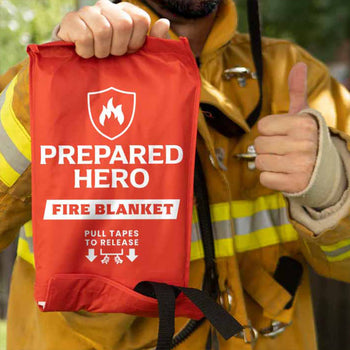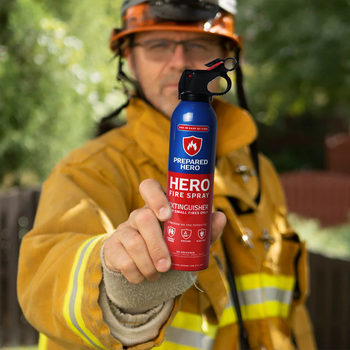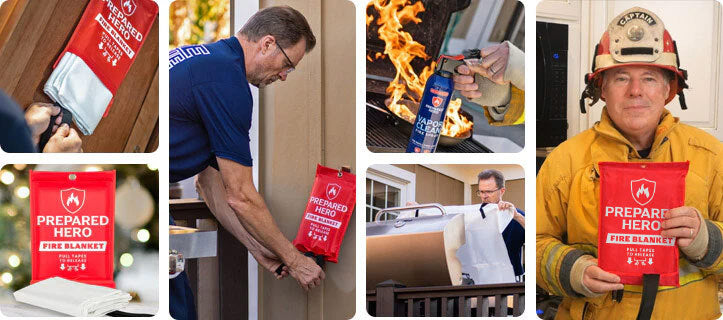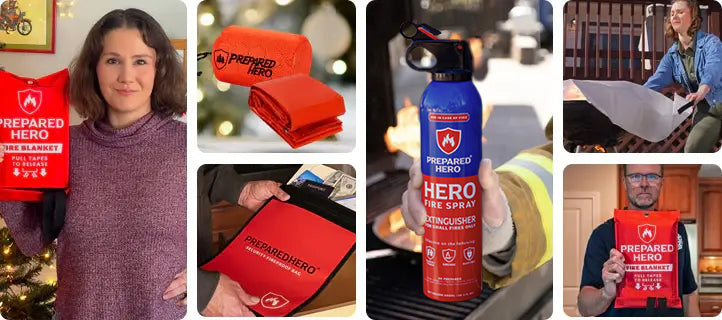Where you put your smoke detectors matters just as much as installing them. Proper placement makes sure they can detect...
Gas fire pits are among the top choices for outdoor settings and for many reasons. They’re easy to use, maintain, and start (you don’t need to chop or burn wood). However, they do come with some cons.
So, is a gas fire pit worth it? Whether you want to install one in your yard or just want to know how they work, this guide is for you. We’ll also talk about their pros and cons, and how to use them safely.
What Is a Gas Fire Pit?

As the term implies, a gas fire pit is an outdoor heater that uses gas (propane or natural gas). It gives warmth without burning wood, so you don’t have to deal with smoke, ash, or cleanup. Instead of starting a fire, you simply turn a knob or push a button to light it. Easy, right?
What makes them appealing is how easy and maintenance-friendly they are. You don’t need to chop wood or deal with embers. Some models even let you control the flame height, which is handy when you want to adjust the temperature and ambiance.
You can place gas fire pits on patios, decks, or in the middle of the yard. There are also tons of styles to choose from. You have sleek and modern to rustic and classic. Plus, they’re generally safe as long as you follow fire pit safety rules. In short, these outdoor fire pits are an easy way to enjoy fire without the risk and mess.
How Does a Gas Fire Pit Work?
A gas fire pit works by sending gas through a burner that produces the flame. The fuel comes from a natural gas line or propane tank, depending on the type you have. In particular, the burner is usually a metal tube or ring with small holes. The gas comes out of the holes, and that’s where the fire starts.
You either light a gas fire pit manually using a match or automatically using a spark ignition. Some fire pits have pilot lights that stay on, which makes them easier to relight. Once on, you can control how big or small the flame goes using a valve or knob.
You’ll also see lava rocks, ceramic logs, or fire glass on top of the burner. They don’t actually burn. They’re just there to make the fire look better and help spread the heat. Good gas fire pits also have safety features like automatic shut-off valves and thermocouples. These features help block the gas if the flame dies or something’s off.
Is a Gas Fire Pit Worth It?

Yes, a gas fire pit is worth it if you’re looking for something easy, mess-free, and low-maintenance. You get warmth and ambiance with just pushing a button or turning a knob. Plus, you don’t need to chop wood, clean piles of ash, and deal with too much smoke.
While there are some factors you have to consider, a gas fire pit is generally a great option if you want a convenient, comfortable outdoor fire pit. It can be expensive upfront, but it’s a worthy investment you can use for years.
Which Is Better, a Wood or Propane Fire Pit?
Propane fire pits are better than wood because they burn cleaner and are easier to light up. However, the best option always depends on your needs and preferences.
For instance, if you love crackling wood and the scent it gives, wood fire pits are the best choice. On the other hand, if you want something convenient and low-maintenance, a propane fire pit is the way to go. At the end of the day, choosing between a propane and wood fire pit comes down to what matters most to you: convenience or tradition.
Wood fire pits give you the classic campfire experience: crackling logs, smoky scent, and dancing flames. But they also need more work. You have to chop or buy wood, manually start the fire, and clean up the ashes. It’s also hard to control the heat. Smoke inhalation is a risk as well.
On the flip side, propane fire pits are easier to use. You just turn a knob or press a button, and you get flames without the smoke and mess. They’re cleaner, easier to use, and more energy-efficient. While the flames may not feel as real as a wood fire pit’s, you still get the heat and ambiance.
If you love the classic campfire vibe and don’t mind the effort, go with a wood fire pit. But if you want something clean, easy, and quick, use a propane fire pit.
What Are the Downsides of a Propane Fire Pit?

Propane fire pits are super convenient, but they’re not perfect. Before you commit, it’s good to know the trade-offs. Here are a few downsides to keep in mind before making your choice.
1. Higher Fuel Costs
Propane is generally more expensive than natural gas or wood. Over time, the cost of refilling tanks adds up, especially if you use the fire pit often.
2. Tank Storage and Refills
You’ll need to store propane tanks safely, usually outside and away from heat. You also have to keep an eye on how much fuel is left and make time for refills.
3. Limited Burn Time
Propane tanks only last as long as their fuel. Once the fuel runs out, your fire’s done until you replace or refill the tank.
4. Smaller Flames
Some propane fire pits don’t produce large flames. If you’re expecting a big, roaring fire like you get with wood, you might be disappointed.
5. Soot Buildup
Propane fire pits can deposit soot on lava rocks or fire glass. This doesn’t happen often, yet you can end up with a dirty-looking fire pit that needs to be professionally cleaned.
6. Safety Risks
Propane is heavier than air. If there’s a leak, the gas can collect in low spots. It’s a fire hazard. Proper ventilation and handling are a must.
It’s also smart to keep basic safety tools close by. A fire spray can put out flames before they spread, while an emergency fire blanket is another solid backup that smothers fires in seconds. They’re both easy to use, no special training needed.
7. Missing the Campfire Feel
If you love the crackle, scent, and vibe of real wood fires, propane might feel a bit too clean or artificial. It’s just not the same experience for some people.
Gas Fire Pit Safety

Gas fire pits are an easy way to enjoy a cozy flame without the smoke or mess of wood. But like any fire feature, they come with safety risks. Here's what to know to keep things safe while you enjoy the glow:
1. Pick the Right Spot
Always place your gas fire pit at least 10 feet away from anything that can catch fire, including your house, fence, detached garage, and plants. Keep it on a flat, non-flammable surface like concrete or stone.
2. Keep It Ventilated
Gas fire pits need good airflow. Never use them in enclosed spaces like attached garages, tents, or under low-hanging trees or power lines. Ventilation keeps carbon monoxide from building up.
3. Check for Leaks
Inspect the gas lines and connections before using your fire pit. A quick soap-and-water test can help you spot leaks. If you see bubbles, turn everything off and fix the issue before lighting it.
4. Stay Close
Never leave a lit gas fire pit unattended. Keep an eye on it, especially if there are kids or pets around. Fires can get out of control fast if you're not paying attention.
5. Have Safety Tools Nearby
Keep a fire extinguisher, fire blanket, or fire spray within reach. It’s better to have them ready and not need them than the other way around.
6. Turn It Off Right
Shut off the gas completely and let everything cool down before covering or walking away.
How Long Does a 20-Pound Propane Tank Last With a Fire Pit Table?

A 20-lb propane tank usually lasts for three to six hours if you’re running your fire pit table on high. But that’s just an estimate. The exact period depends on how strong the flame is, how many BTUs (British Thermal Units) your fire pit uses, and the weather.
If your fire pit has a high BTU rating, like 60,000 or more, the tank might only last two to three hours. On the other hand, if you keep the flame low or use a fire pit with fewer BTUs, you could stretch it to eight or nine hours.
Windy nights can also burn through fuel faster, since the fire has to work harder to stay lit. A rough rule of thumb: divide 430,000 (the BTU capacity of a 20-lb tank) by your fire pit’s BTU rating to get an idea of how long it’ll last.
In short, a 20-lb propane tank can last anywhere from a quick evening hangout to a full backyard party, depending on how you use it.
Do Gas Fire Pits Need a Vent?
Yes, gas fire pits need a vent, especially if you're using propane. Vents help prevent gas from building up inside the fire pit, which could lead to safety issues like fires or gas leaks.
A propane fire pit’s vent is typically located near the bottom of the enclosure with an air mixer designed for cleaner-burning gas. When trapped, gases can become dangerous. It’s a crucial feature that makes sure everything operates safely and efficiently.
Are Gas Fire Pits Bad for Your Health?

Gas fire pits are not inherently harmful to your health, but they do pose a few risks when you don't use them properly. One of the big risks is carbon monoxide, a gas you can’t smell or see.
Carbon monoxide is deadly in high amounts. That’s why proper ventilation is so important, especially if the fire pit is in an enclosed or semi-enclosed space.
The best part is that a gas fire pit releases fewer particles and less smoke than a wood fire. As long as you are outside and get good airflow, you’re going to be fine. Just be careful and follow the guidelines, so you won’t have any problems.
Is It Safe to Keep a Gas Fireplace On Overnight?
It’s not safe to leave a gas fireplace on overnight. Even if it’s a vented model that’s built to run longer, things can still go wrong. There’s always a risk of carbon monoxide buildup, especially with vent-free fireplaces, and you won’t notice it while you’re asleep.
There’s also the chance of a gas leak or a part malfunctioning without warning. For your safety, it’s best to turn off your gas fireplace before going to bed. If you need heat overnight, use a safer option like a space heater with automatic shutoff.
What Is the Difference Between a Propane Fire Pit and a Gas Fire Pit?

The main difference between a propane fire pit and a natural gas fire pit comes down to the type of fuel they use. Propane fire pits run on portable propane tanks, which makes them easy to move around and set up wherever you want. They also heat up fast and can be adjusted for more or less warmth.
On the other hand, natural gas fire pits are hooked up to a natural gas line, so they stay in one spot. They offer steady, continuous heat but need to be installed by professionals. If you want something flexible, go with propane. If you want convenience and no refills, natural gas is the way to go.
Do Gas Fire Pits Give Off Carbon Monoxide?
Yes, gas fire pits do give off carbon monoxide. Even though they’re cleaner than wood fires and don’t produce smoke or sparks, they still release this gas as a byproduct of burning propane or natural gas. Carbon monoxide is colorless and odorless, so you won’t know it’s there without proper detection.
That’s why it’s important to always use gas fire pits in well-ventilated outdoor areas. Never use them in enclosed spaces like garages or tents. With enough airflow, they’re generally safe, but it’s good to know the risk and use them the right way.
How Many Years Should a Gas Fire Pit Last?

A gas fire pit generally lasts from 10 to 25 years, averaging 15 years. Proper care, model quality, and regular maintenance can also make it last beyond the average.
Things like how often you use it, the type of gas fire you have, and how clean you keep it all play a role. So if it’s installed properly and you don’t skip on servicing, your gas fire pit can stay in good shape for well over a decade, maybe even two.
Conclusion
Gas fire pits are a great addition to your outdoor space if you want something easy to use and low-maintenance. They give off consistent heat, are easy to use, and make less mess than wood fire pits. However, they come with a few cons, such as fuel expense, ventilation requirements, less ambiance than a classic campfire, and fire risks.
Do you want reliable, easy-to-use, and affordable tools to prevent pit fires from spreading? Check out Prepared Hero’s fire prevention tools here, and get up to 51% off on certain items. Stay prepared, hero!


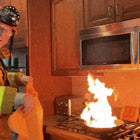 Fire
Fire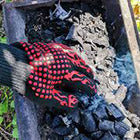 Safety
Safety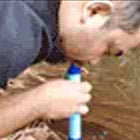 Survival
Survival Protection
Protection New
New
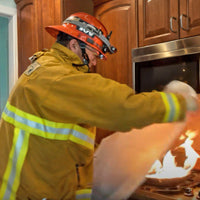 Fire
Fire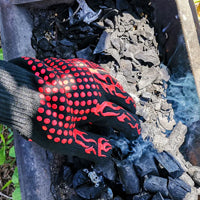 Safety
Safety Survival
Survival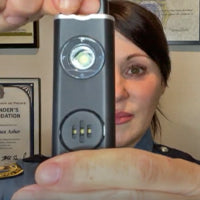 Protection
Protection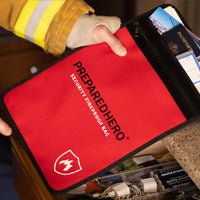 New
New
